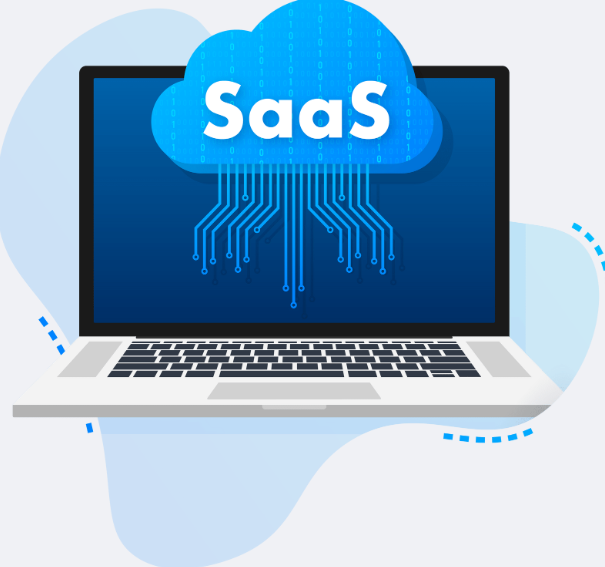Customer experience (CX) is the foundation of modern business success, and companies that invest in enhancing CX gain a significant competitive advantage. With the rapid evolution of technology, businesses are leveraging SaaS digital transformation to optimize CX design and deliver seamless interactions. SaaS (Software as a Service) platforms provide scalable, cloud-based solutions that empower businesses to refine customer engagement strategies, enhance personalization, and streamline operations. As customer expectations continue to rise, SaaS digital transformation is at the forefront of delivering exceptional experiences that drive loyalty and revenue.
Understanding SaaS Digital Transformation in CX Design
SaaS digital transformation refers to the adoption of cloud-based software solutions to modernize business processes, particularly in customer experience. Unlike traditional on-premise software, SaaS solutions offer flexibility, real-time updates, and seamless integration across multiple platforms. In CX design, SaaS platforms facilitate automation, AI-driven insights, and omnichannel interactions, ensuring businesses stay responsive to customer needs. The shift toward SaaS digital transformation has revolutionized industries such as e-commerce, banking, healthcare, and customer support by enabling data-driven decision-making and real-time customer engagement.
The Key Role of SaaS in Customer Experience (CX) Enhancement
Personalization at Scale
One of the most significant advantages of SaaS digital transformation in CX design is the ability to deliver personalized customer experiences at scale. AI-driven SaaS solutions analyze customer behavior, preferences, and past interactions to provide tailored recommendations. Businesses can utilize automation tools to offer customized promotions, content, and product suggestions, ensuring every customer feels valued.
Omnichannel Experience
Customers expect a seamless experience across multiple channels, whether through websites, social media, mobile apps, or in-person interactions. SaaS digital transformation enables businesses to unify customer interactions across all touchpoints, providing a consistent and connected experience. With omnichannel integration, businesses can track customer journeys and ensure smooth transitions between platforms without losing context.
Automation & AI Chatbots
SaaS digital transformation empowers businesses to deploy AI-powered chatbots and automation tools that handle customer inquiries efficiently. These solutions reduce response times, improve issue resolution, and offer 24/7 support, leading to higher customer satisfaction. AI chatbots leverage natural language processing (NLP) to understand customer intent and provide relevant responses, enhancing overall CX design.
Customer Data Management
Data is at the core of exceptional customer experiences. SaaS digital transformation facilitates robust data management systems that consolidate customer information in a centralized platform. Businesses can leverage these insights to enhance personalization, predict customer needs, and implement targeted marketing campaigns. By utilizing SaaS-driven analytics, companies gain a deeper understanding of their audience and refine CX strategies accordingly.
The Benefits of SaaS-Driven CX Design
Improved Customer Retention
Customers are more likely to remain loyal to brands that provide smooth, engaging, and personalized experiences. SaaS digital transformation helps businesses develop customer loyalty programs, send timely follow-ups, and resolve issues proactively. With AI-driven insights, businesses can predict customer churn and take preventive measures to retain their clientele.
Scalability & Flexibility
As businesses grow, their CX strategies must evolve. SaaS digital transformation ensures scalability by allowing companies to expand their customer support systems, marketing automation, and data analytics capabilities without requiring extensive infrastructure investments. Cloud-based solutions adapt to changing business needs, making it easier for companies to scale operations efficiently.
Cost Efficiency
Traditional customer experience management often involves significant upfront costs for software, hardware, and maintenance. SaaS digital transformation reduces these expenses by providing subscription-based models that eliminate the need for costly IT infrastructure. Businesses can allocate resources more effectively while still benefiting from cutting-edge CX tools and technologies.
Enhanced Security & Compliance
Security and compliance are critical in CX design, especially when handling sensitive customer data. SaaS digital transformation ensures that customer information remains protected through robust encryption, authentication protocols, and regulatory compliance measures. Leading SaaS providers regularly update security features to prevent data breaches, fostering trust and confidence among customers.
Best Practices for Implementing SaaS in CX Design
Choosing the Right SaaS CX Platform
Selecting the right SaaS digital transformation platform is crucial for enhancing CX. Businesses must evaluate their specific needs, customer base, and industry requirements when choosing a SaaS provider. Key considerations include integration capabilities, AI-driven analytics, automation features, and user-friendly interfaces.
Integrating SaaS Solutions with Existing Systems
For seamless SaaS digital transformation, businesses must ensure that new SaaS solutions integrate smoothly with existing CRM, ERP, and customer support systems. This integration enhances operational efficiency, reduces redundancies, and improves data consistency, ultimately strengthening the overall CX design.
Measuring Success with CX KPIs
Businesses must track key performance indicators (KPIs) to measure the success of their SaaS digital transformation efforts. Metrics such as customer satisfaction scores (CSAT), net promoter scores (NPS), response times, and customer retention rates provide insights into the effectiveness of SaaS-driven CX initiatives.
Overcoming Challenges in SaaS Adoption
While SaaS digital transformation offers numerous benefits, businesses may face challenges such as employee resistance, integration complexities, and data migration issues. To overcome these obstacles, companies should provide proper training, collaborate with experienced SaaS vendors, and develop a strategic implementation plan.
Future Trends in SaaS Digital Transformation for CX Design
AI-Powered Virtual Assistants
As AI technology advances, SaaS digital transformation will continue to drive the development of intelligent virtual assistants capable of handling complex customer interactions and providing human-like responses.
Hyper-Personalization through Real-Time Data
Future CX strategies will rely heavily on real-time data processing, allowing businesses to offer hyper-personalized experiences. SaaS platforms will leverage AI and machine learning to analyze customer behavior instantly and adapt services accordingly.
Low-Code and No-Code Platforms
The rise of low-code and no-code platforms will accelerate SaaS digital transformation, enabling businesses to develop and customize CX solutions without requiring extensive technical expertise.
Conversational AI and Voice Technology
Voice-based interactions will become more prevalent as SaaS digital transformation integrates conversational AI into customer service, enhancing accessibility and engagement through voice-enabled assistants.
Takeaway
SaaS digital transformation is redefining customer experience design by offering businesses the tools to enhance personalization, streamline operations, and improve engagement. With the rapid adoption of AI, automation, and data-driven insights, SaaS platforms are empowering companies to deliver exceptional CX that drives customer loyalty and business growth. As technology continues to evolve, investing in SaaS digital transformation is no longer an option but a necessity for businesses that want to stay ahead in the competitive landscape. Companies that embrace these innovations will create meaningful customer interactions and build a strong foundation for long-term success.











